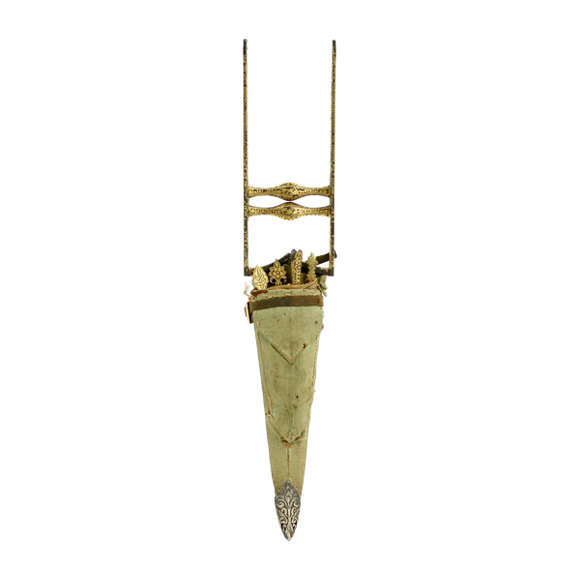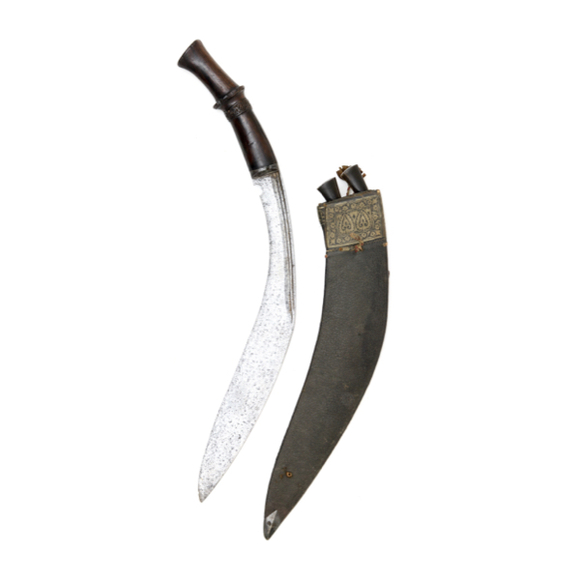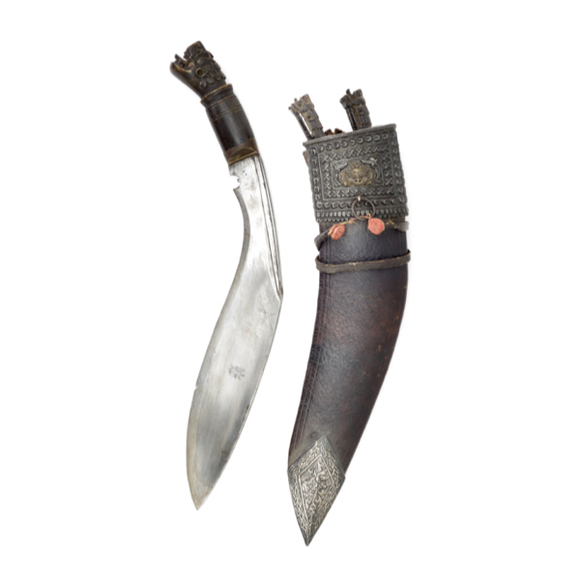With a fine wootz blade with a pronounced center ridge.

175.7 cm / 69 inch or 5’9”
125 cm / 49.2 inch
15 mm / .58 inch
3195 grams
Rajasthan, India.
Wood, steel, silver, gold.
18th century
Description
The Indian musket is called called toradar. (The erroneous term torador is common). Firearms were introduced into north India at large by the founder of the Mughal empire, Babur. He used them in great quantities during his invasion of the Indian subcontinent from Central Asia. One of his two master gunsmiths was nicknamed "The Ottoman", suggesting that is where the technology initially came from.1 Over time, Indian muskets further developed into their own characteristic styles, with more Persian influence. Mughal muskets are typically made of very good steel, enabling the use higher charges of gunpowder. Their long barrels make for improved muzzle velocity, firing more accurately at longer ranges, provided the inside of the barrel is kept sufficiently clean as to minimize friction.
Description
A very fine, long and slender Indian matchlock musket or toradar, probably dating from the late 18th century. It has a dark wooden stock, reinforced with lock-plates plates of thick, high purity silver. The long steel barrel is held to the stock with five loops, all of silver except the one at the breech which is made of iron. The long steel barrel with elaborate golden damascening or koftgari at the breech and muzzle, and on the exposed part of the barrel tang. The muzzle end is octagonal, flaring out to a shape resembling a stylized lotus. The rear loop is damascened in silver around and holds the rear sight at the top, damascened in gold to match the barrel. Golden damascening is repeated on the serpentine, ramrod, and priming pan and its cover. It has two loops for a sling, of solid silver.
Condition
It is complete, save for a plate at the butt end that was probably made of horn, bone or silver. Some wear to the gold and silver damascening. Otherwise in excellent condition with no repairs or other missing parts. Trigger mechanism works smoothly.
Substance over style
The piece shows some restraint in decoration, emphasizing instead on high quality workmanship. While Indian muskets can be very flamboyant in their decoration, with elaborately decorated barrels and painted stocks, workmanship on the various parts is often crude in comparison. When looking at the pictures, pay special attention to the design and execution of the sling loops, the serpentine, the silver bands, etc. The devil is in the details on this one.
Attribution
Elgood describes a number of near-identical toradar in the Tareq Museum in Kuwait. The group was collected by James Andrew Broun-Ramsay, the first Marquess of Dalhousie, who served as Governor-General of India from 1848 to 1856. They are attributed to the Sikh, who had their largest arsenal in Lahore, and dated around 1800. There is another in the museum, also nearly identical to ours, which is labeled late eighteenth-century but no further provenance is mentioned.2
Lord Egerton of Tatton owned a slightly shorter piece that he described as: Matchlock, Toradár; barrel of burnished steel, damascened with gold ornaments at the muzzle and breech; dark wood stock, with silver mounts. Malwa.3 There is also an 18th century piece of a style that seems closely related to this one, that was brought back by the East India Company, that was again labeled as 18th century, Sikh, and made in Lahore.
Lastly, a very similar example has been listed by W.O. Oldman in his 1905 catalog No. 22, item number 39, described as "Gun; "Toradar;", match-lock, gold damascened barrel, fine P: dark wood stock, heavy solid silver mnts. £6/10/0"4
Indian arms are notoriously hard to pin down to a certain place because styles traveled and mixed a lot. However, going by the other known examples, the common denominator seems to be that they date from the late 18th century, up to around 1800, are attributed to northwest India, and in particular Lahore. Some have come from Sikh armories.
Conclusion
A very fine example of a toradar, dated to the late 18th century. Mounted with high-quality solid silver lock plates, barrel bands, and sling loops, of excellent craftsmanship and exhibiting unusual attention to the finer details. Golden damascening on the breech, muzzle, and the various parts including lock and even the ramrod. Overall in very good condition with no significant losses, save for some fading on the golden damascening. The usual wear and tear but no significant damage or later repairs. It is identical to a group of muskets with interesting provenance, attributed to the Sikh of the late 18th century. A fine addition to any collection of Mughal Indian weaponry or black powder firearms.
NOTES
1. Kenneth Chase. Firearms: A Global History to 1700. Cambridge University Press. 2008
2. Robert Elgood: Firearms of the Islamic World in the Tareq Museum, Kuwait. I.B. Tauris Publishers. London / New York, 1995. Pages 152-152 and 174-175.
3. Lord Egerton of Tatton: Indian and Oriental Arms and Armour. Dover Publications; Revised edition, 2002.
4. W.O. Oldman: Illustrated Catalog of Ethnographical Specimens. Limited Edition 1976 Reprint (1000 pieces) by Hales.
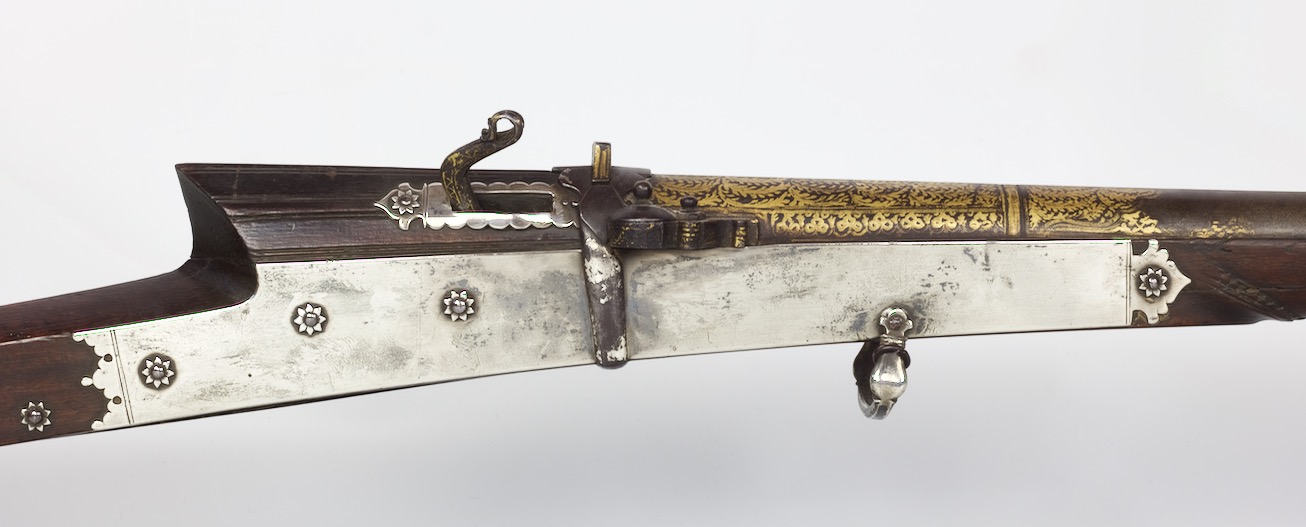
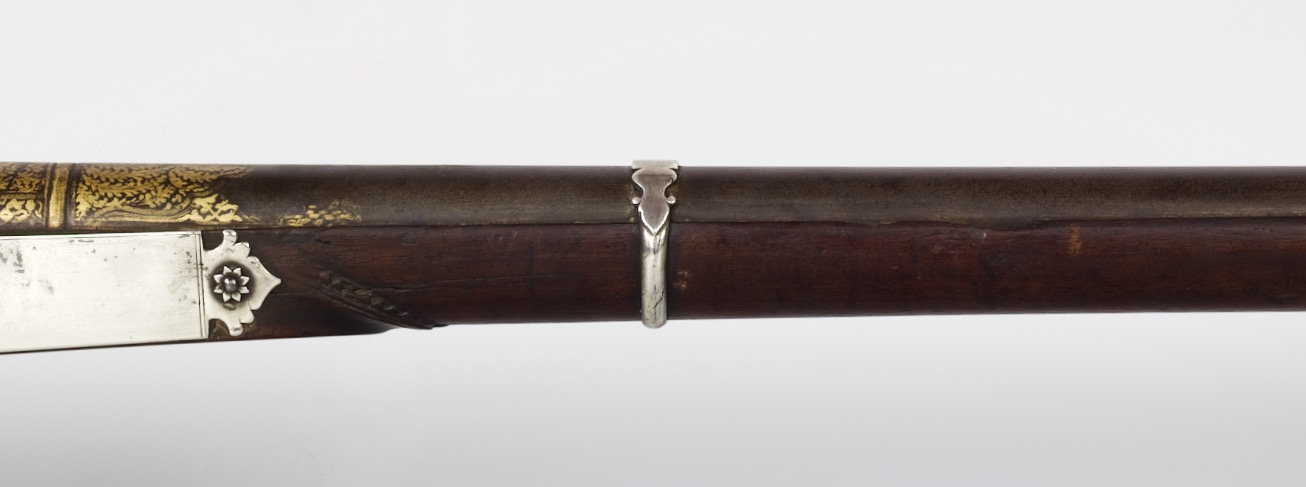
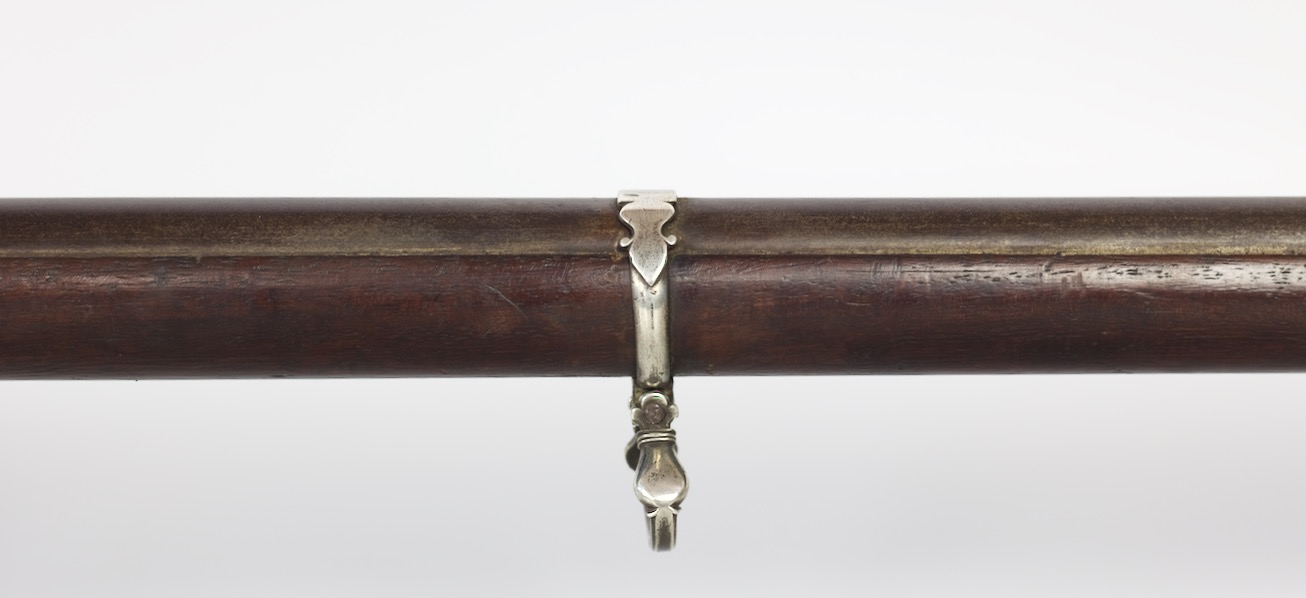
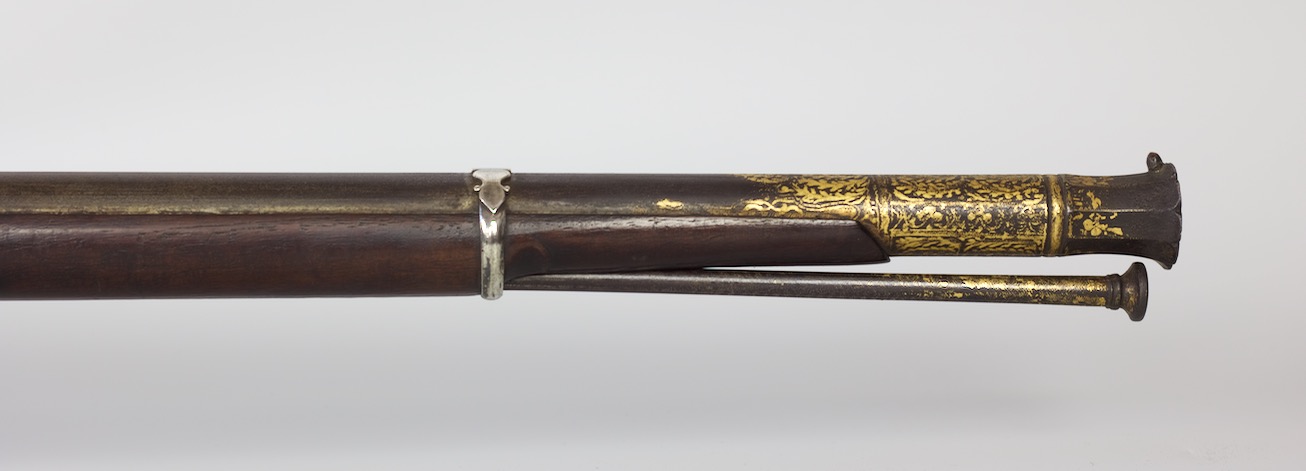
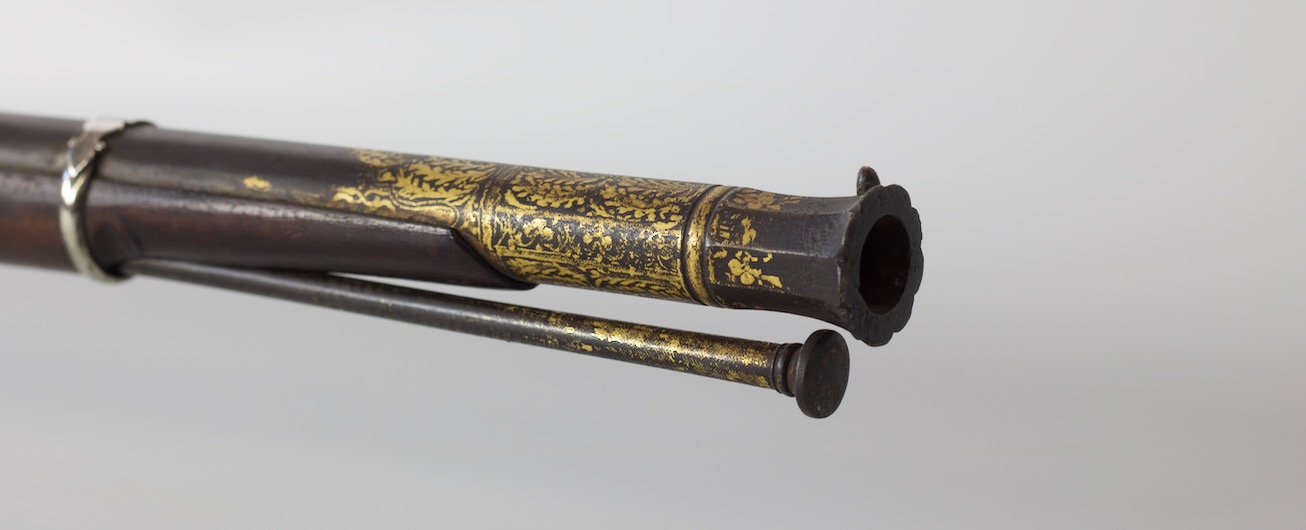
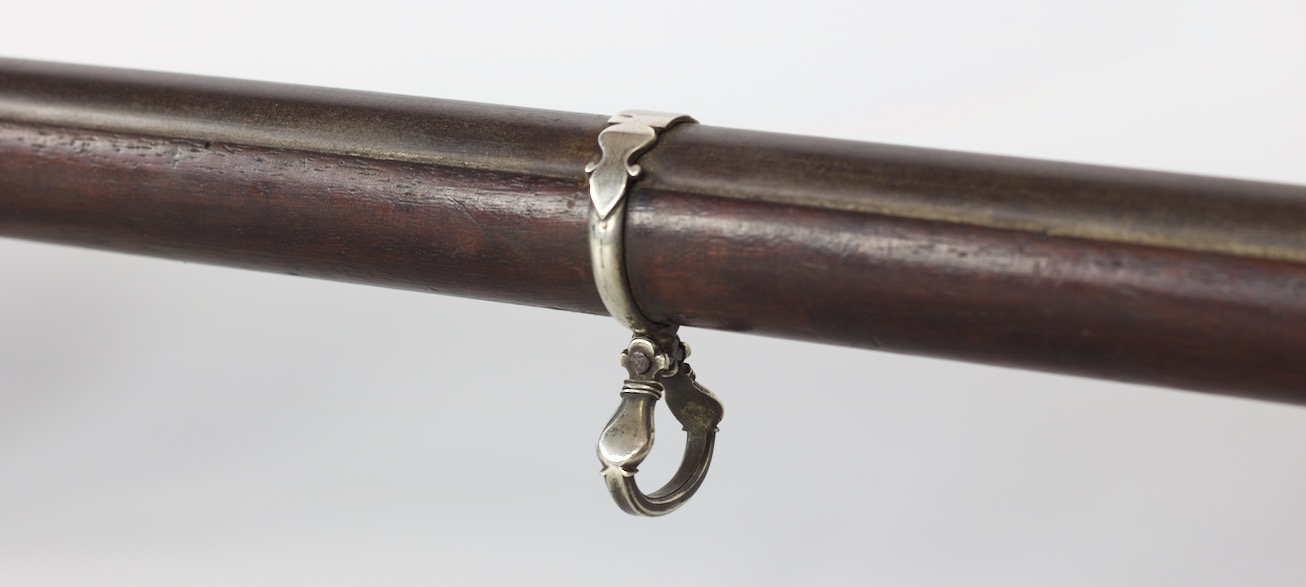

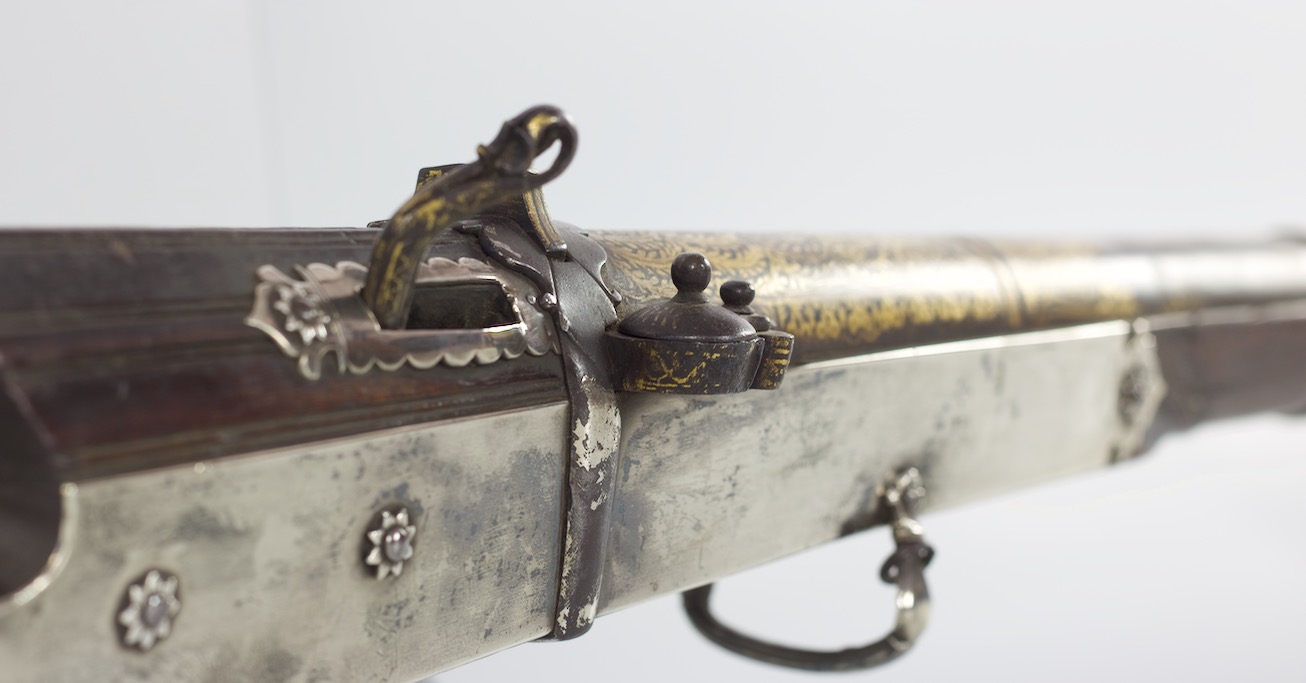
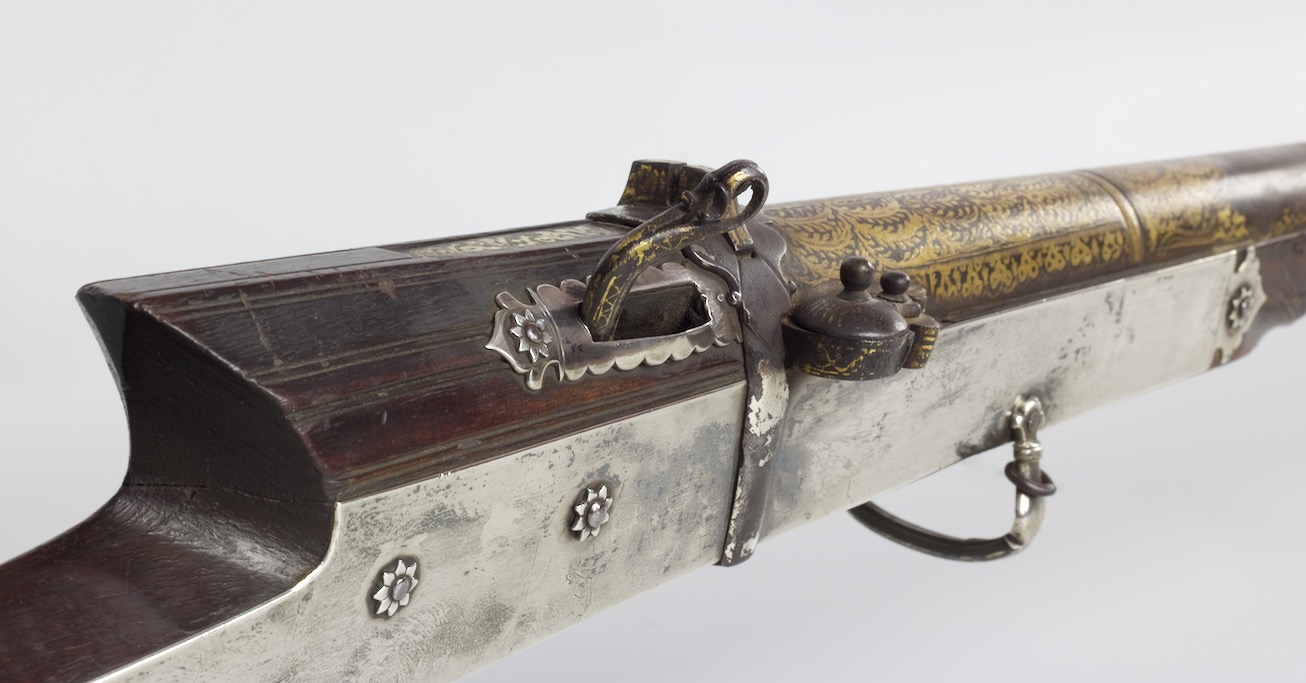
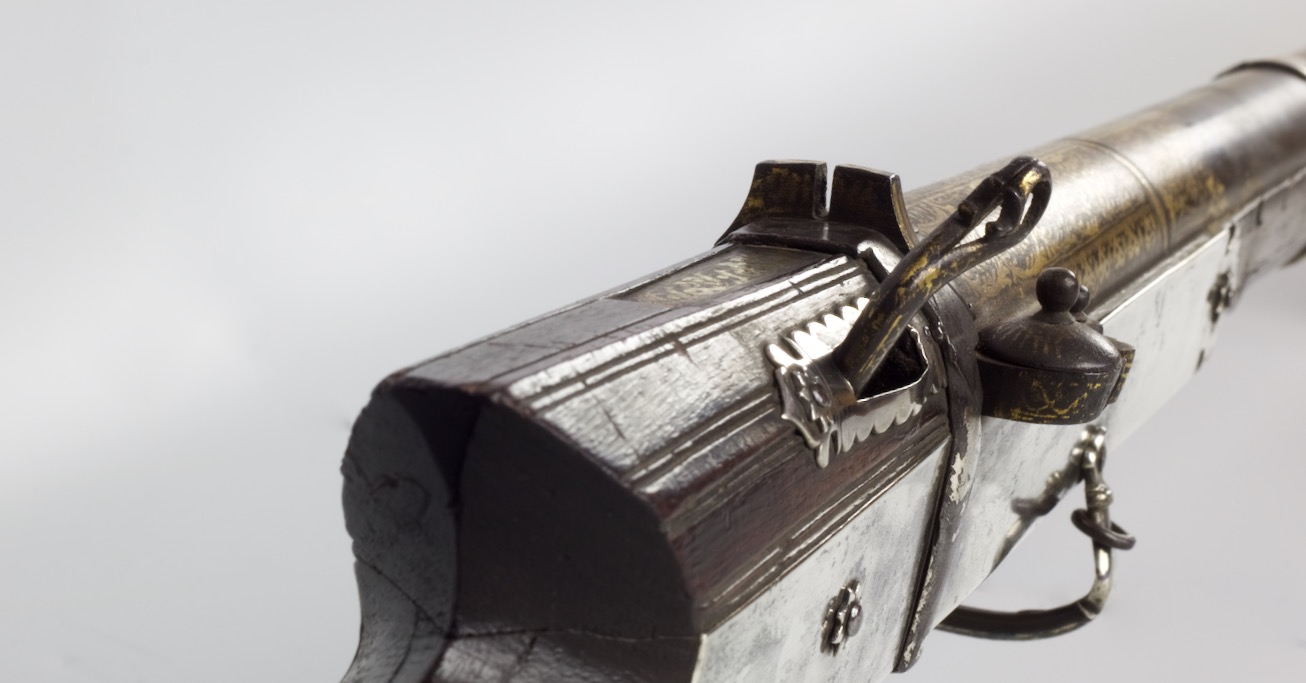

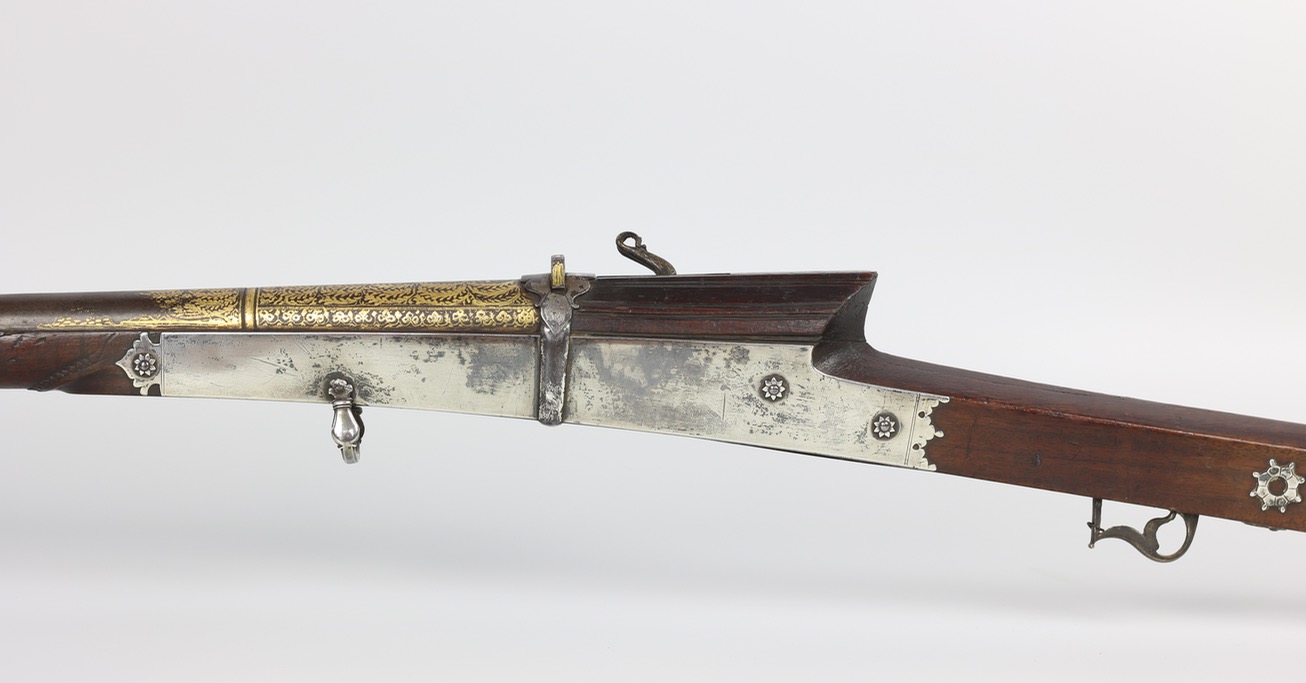


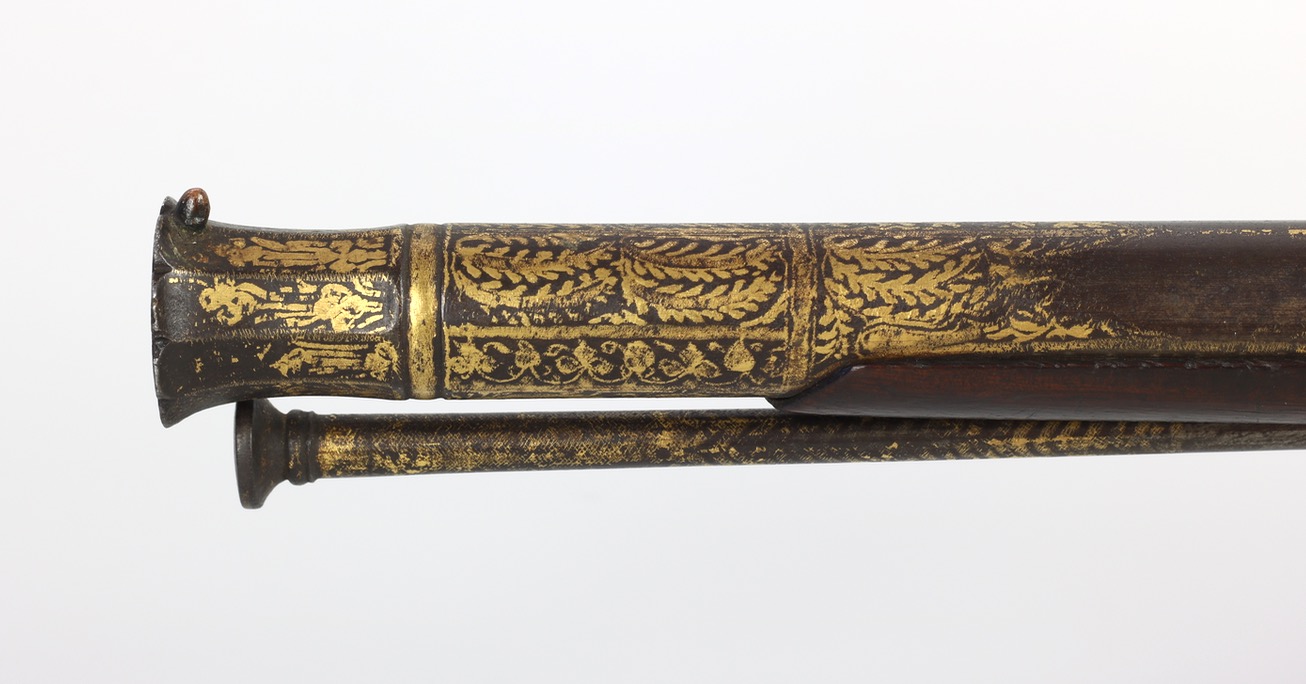
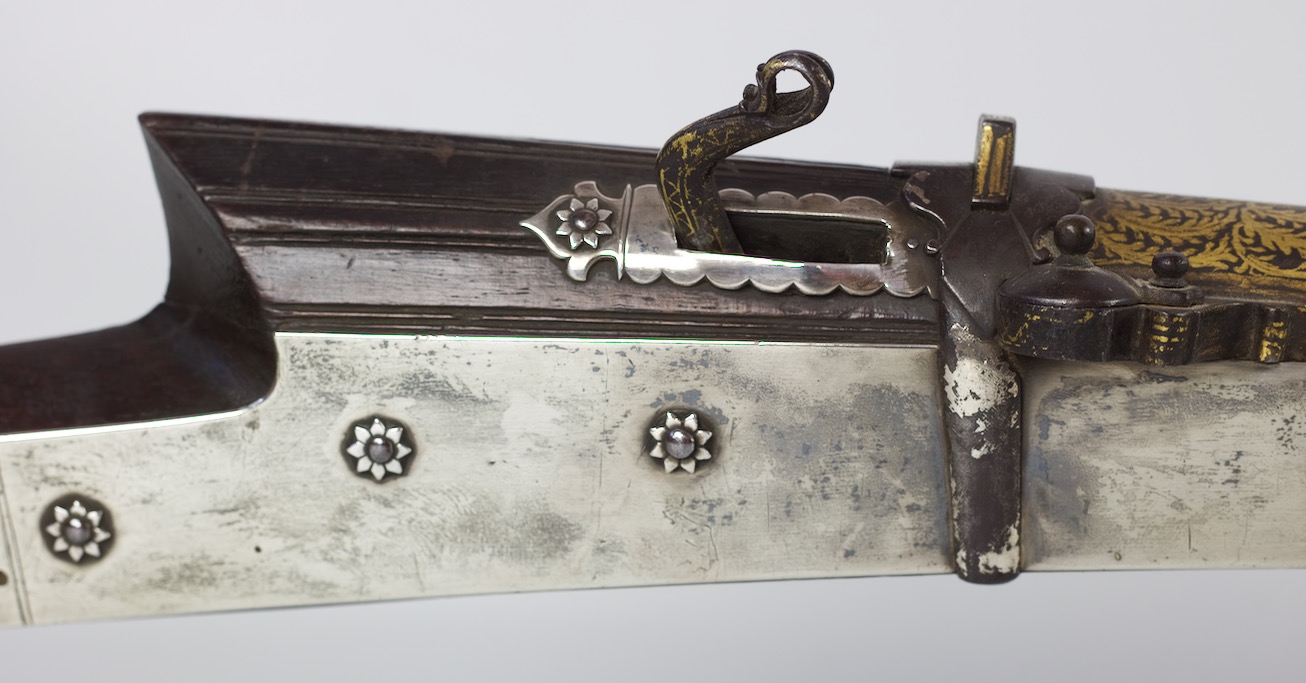


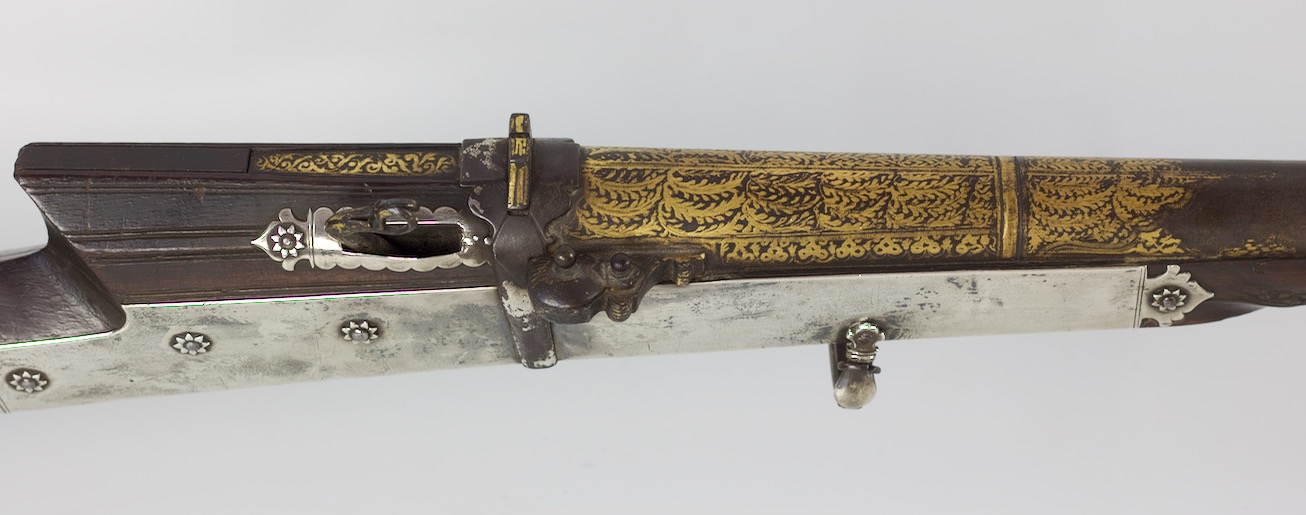
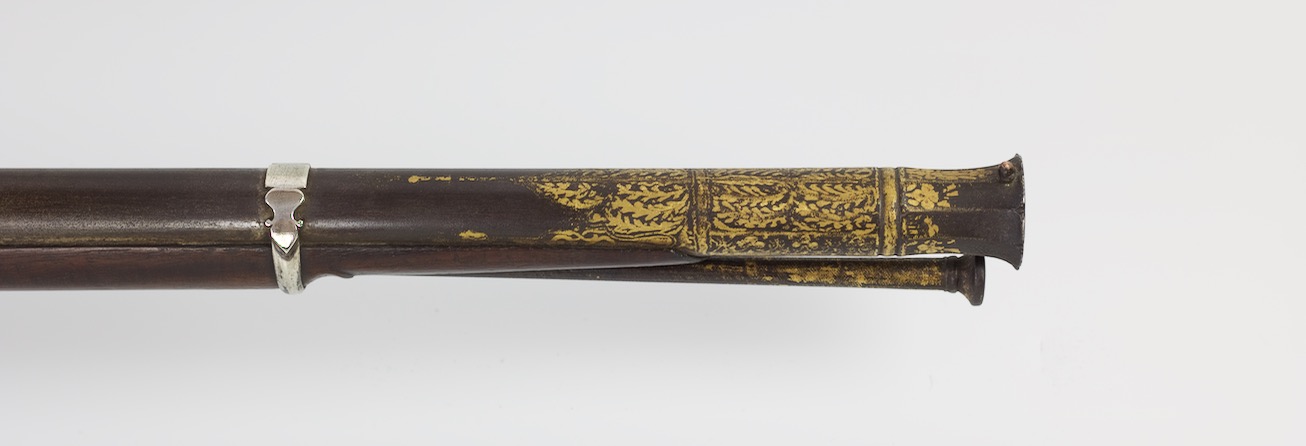
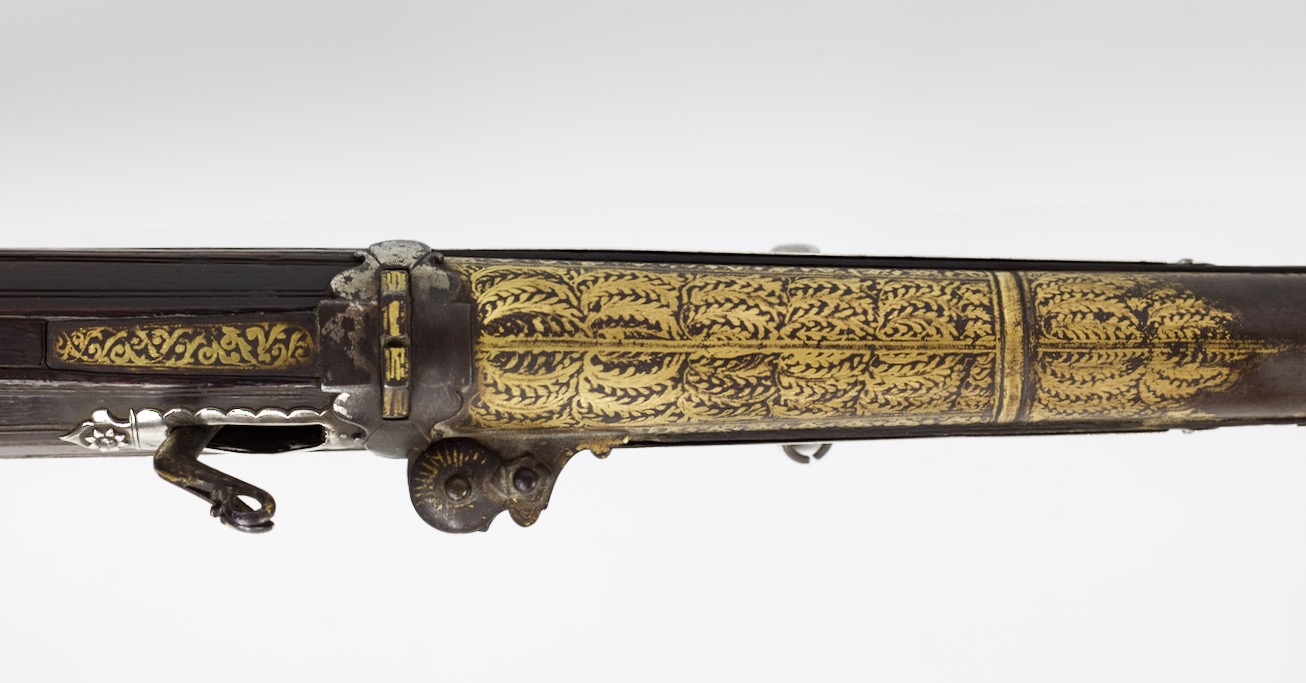
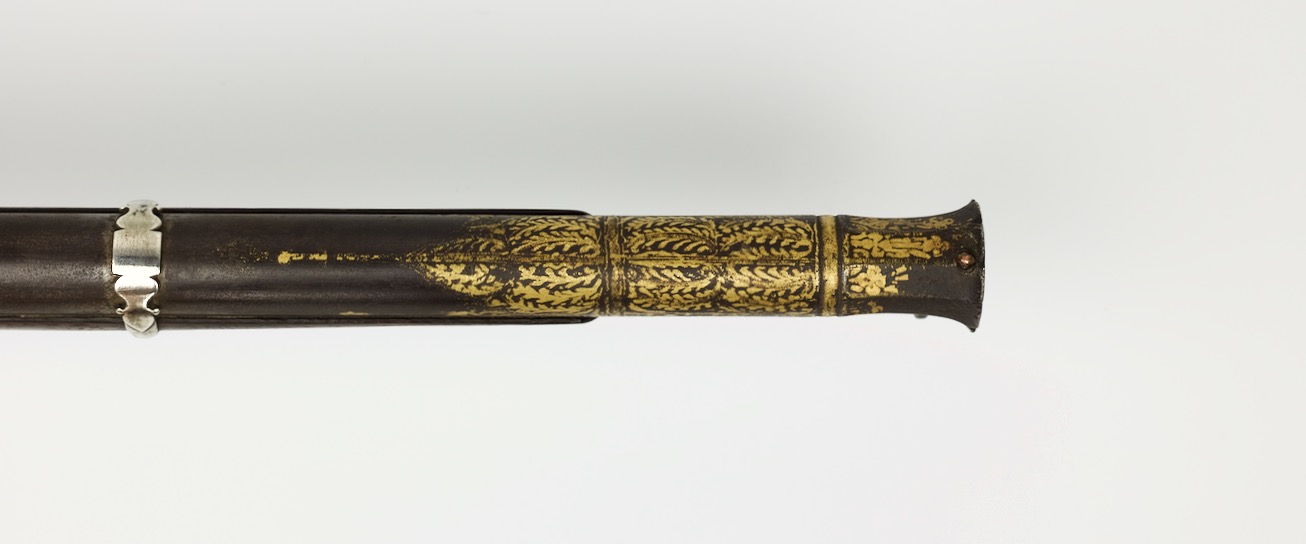
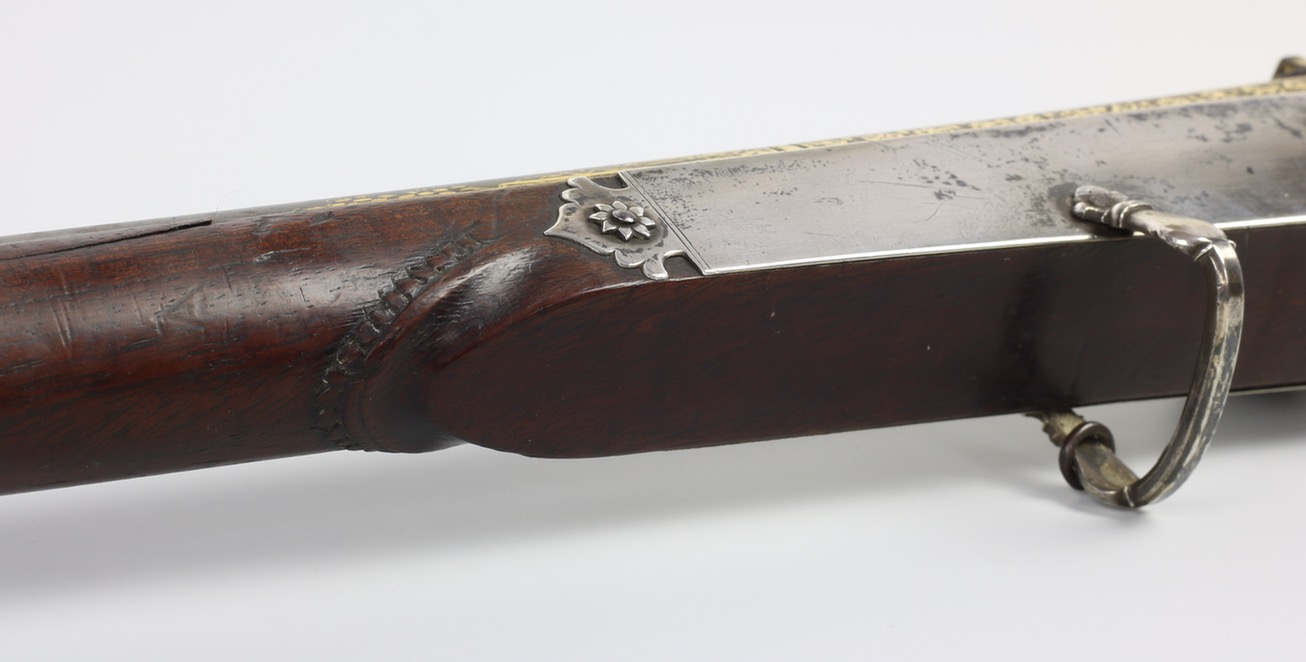
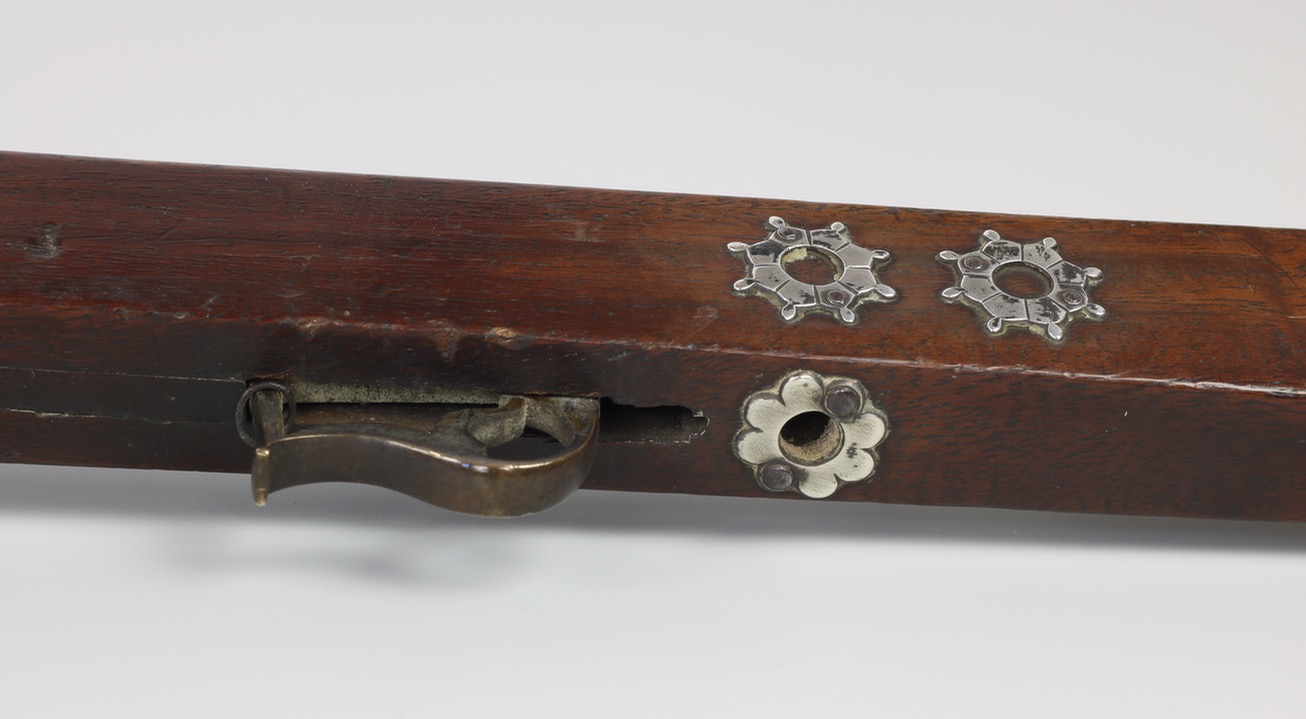

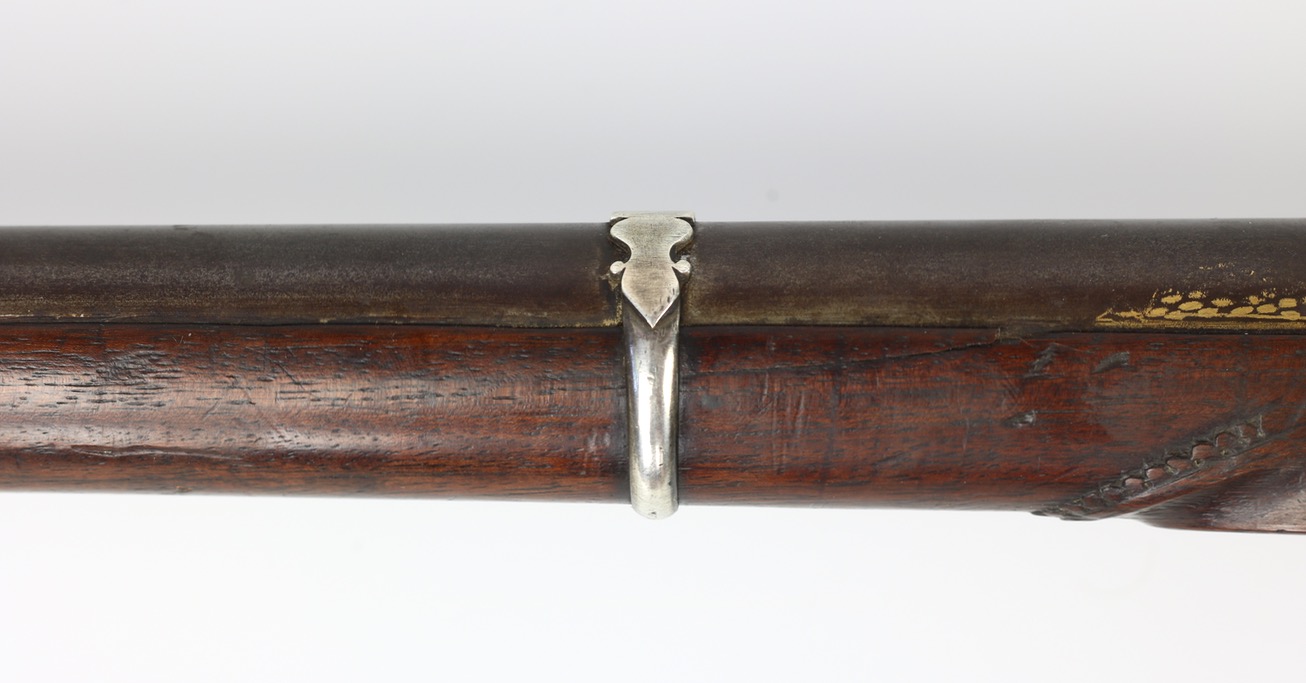
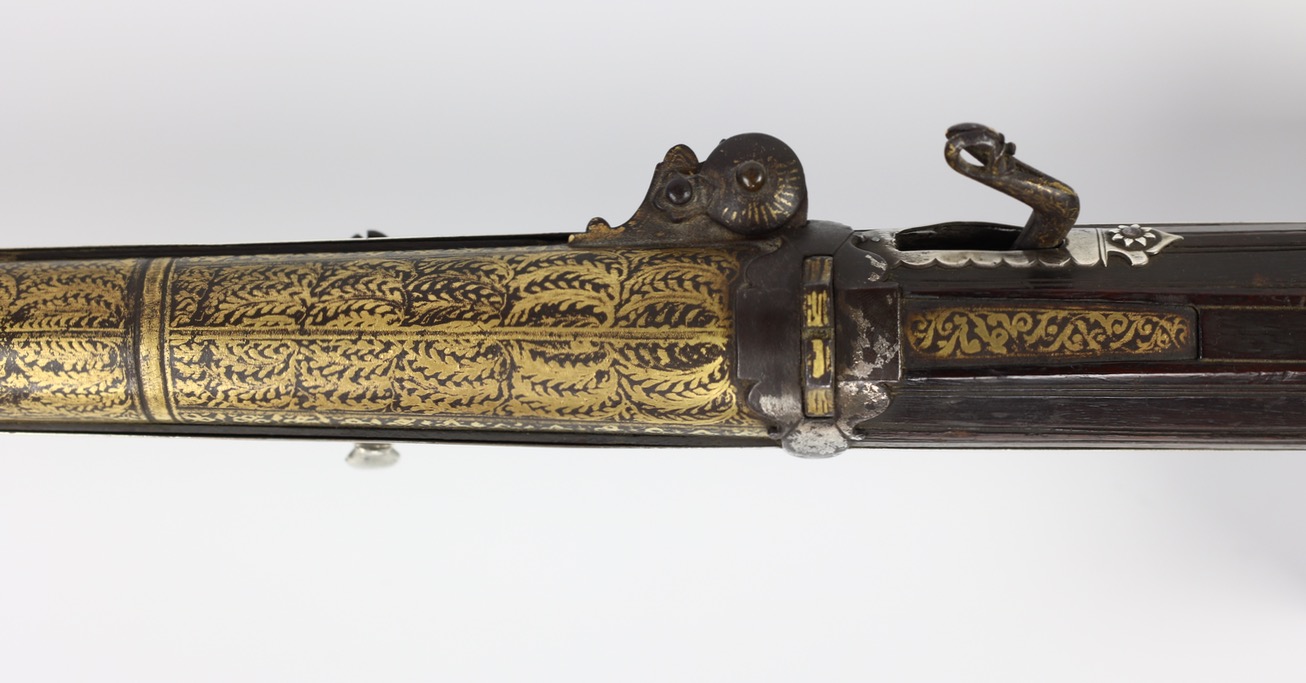
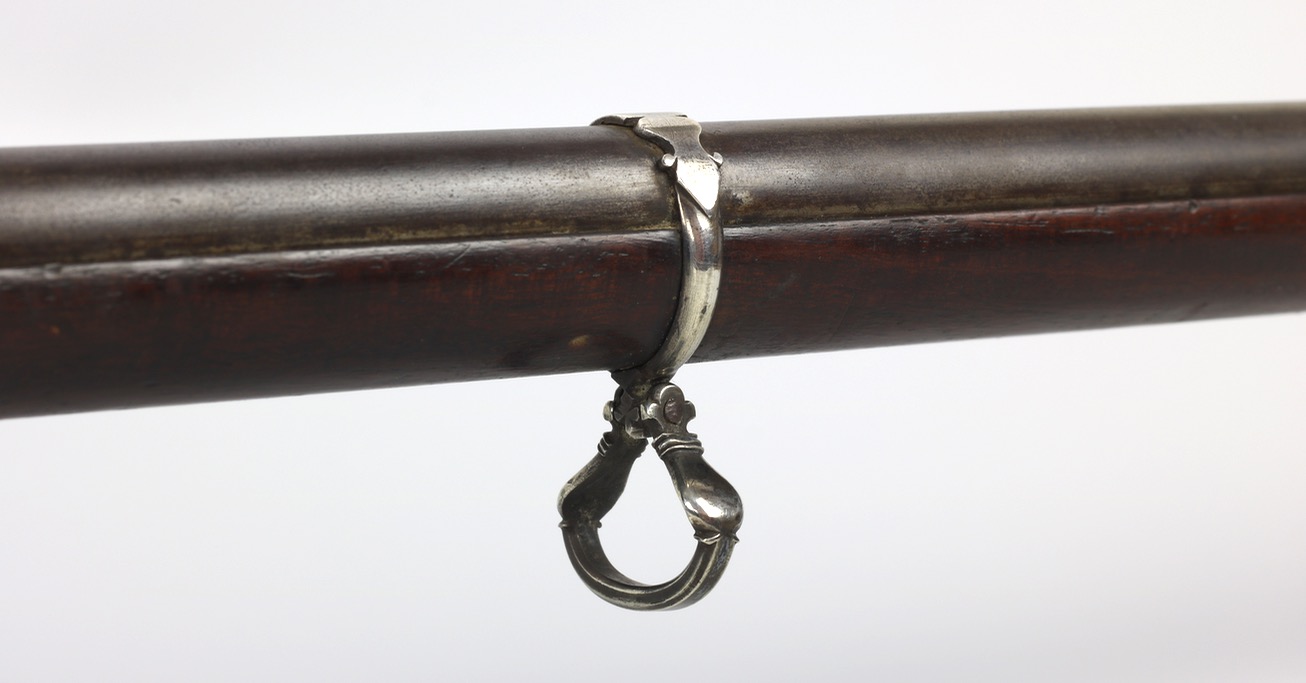

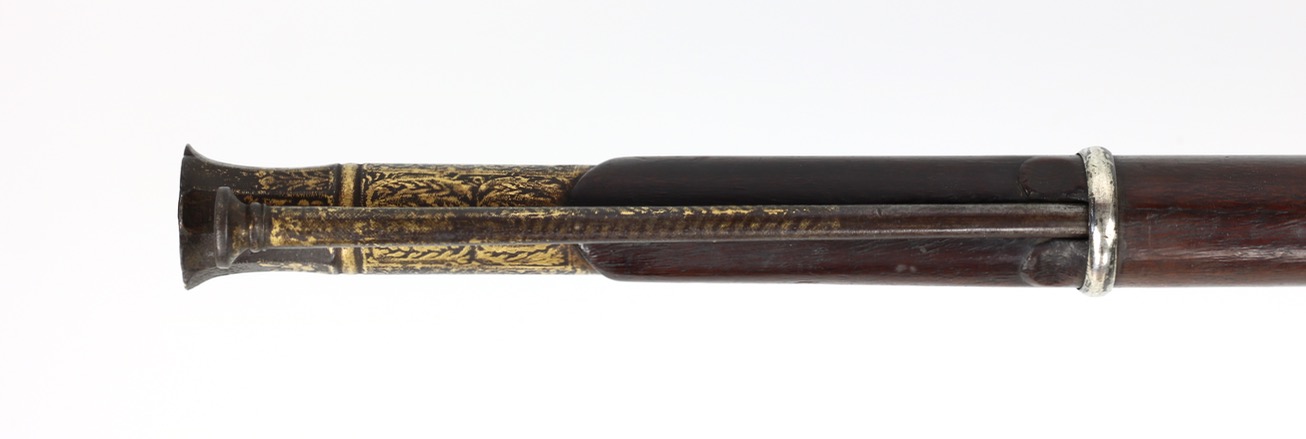

With a very fine Nepalese blade, but kard-like hilt and scabbard.
Early type with very shallow notch in the blade and little flare in the pommel.

